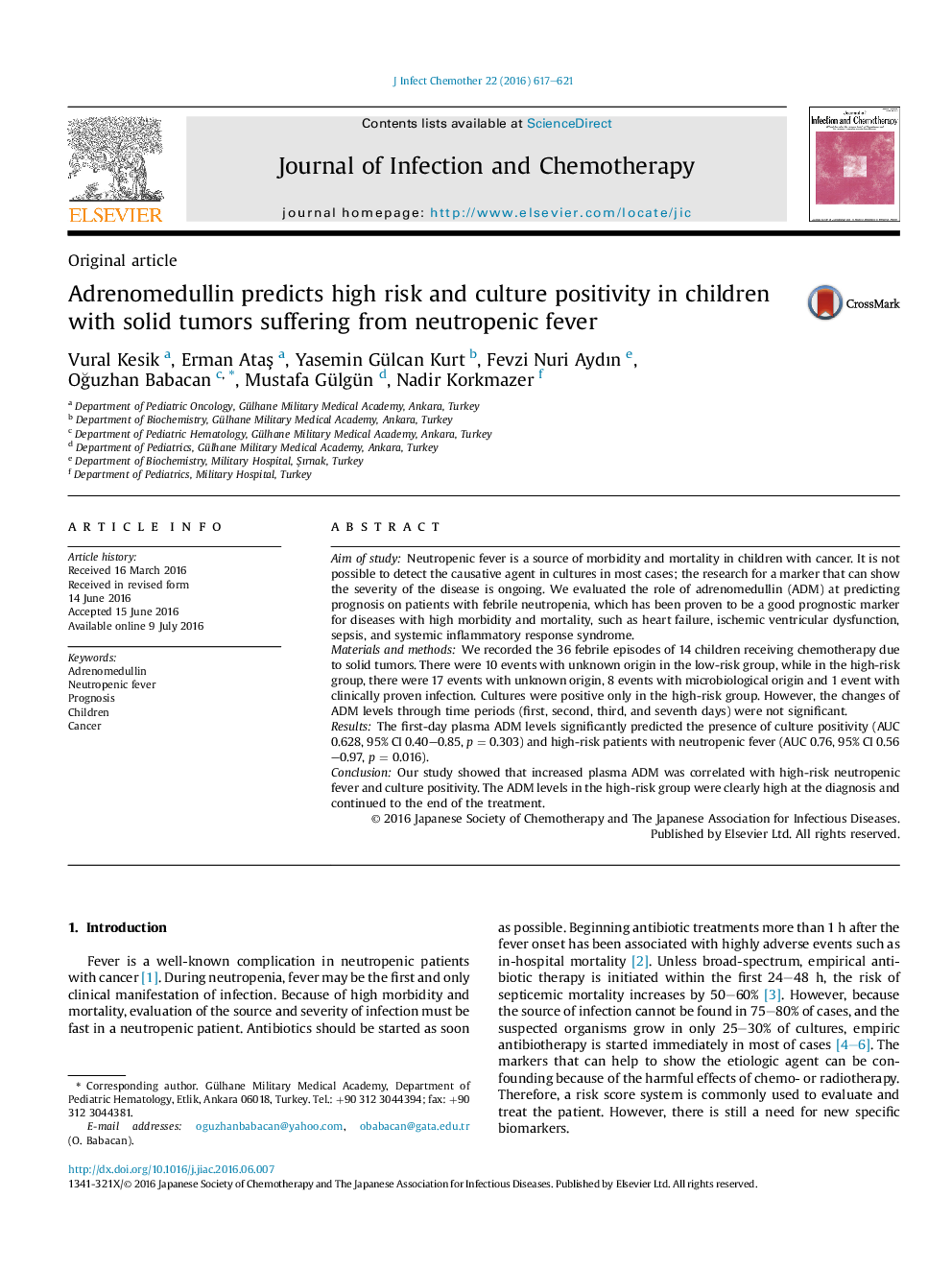| Article ID | Journal | Published Year | Pages | File Type |
|---|---|---|---|---|
| 3376656 | Journal of Infection and Chemotherapy | 2016 | 5 Pages |
Aim of studyNeutropenic fever is a source of morbidity and mortality in children with cancer. It is not possible to detect the causative agent in cultures in most cases; the research for a marker that can show the severity of the disease is ongoing. We evaluated the role of adrenomedullin (ADM) at predicting prognosis on patients with febrile neutropenia, which has been proven to be a good prognostic marker for diseases with high morbidity and mortality, such as heart failure, ischemic ventricular dysfunction, sepsis, and systemic inflammatory response syndrome.Materials and methodsWe recorded the 36 febrile episodes of 14 children receiving chemotherapy due to solid tumors. There were 10 events with unknown origin in the low-risk group, while in the high-risk group, there were 17 events with unknown origin, 8 events with microbiological origin and 1 event with clinically proven infection. Cultures were positive only in the high-risk group. However, the changes of ADM levels through time periods (first, second, third, and seventh days) were not significant.ResultsThe first-day plasma ADM levels significantly predicted the presence of culture positivity (AUC 0.628, 95% CI 0.40–0.85, p = 0.303) and high-risk patients with neutropenic fever (AUC 0.76, 95% CI 0.56–0.97, p = 0.016).ConclusionOur study showed that increased plasma ADM was correlated with high-risk neutropenic fever and culture positivity. The ADM levels in the high-risk group were clearly high at the diagnosis and continued to the end of the treatment.
